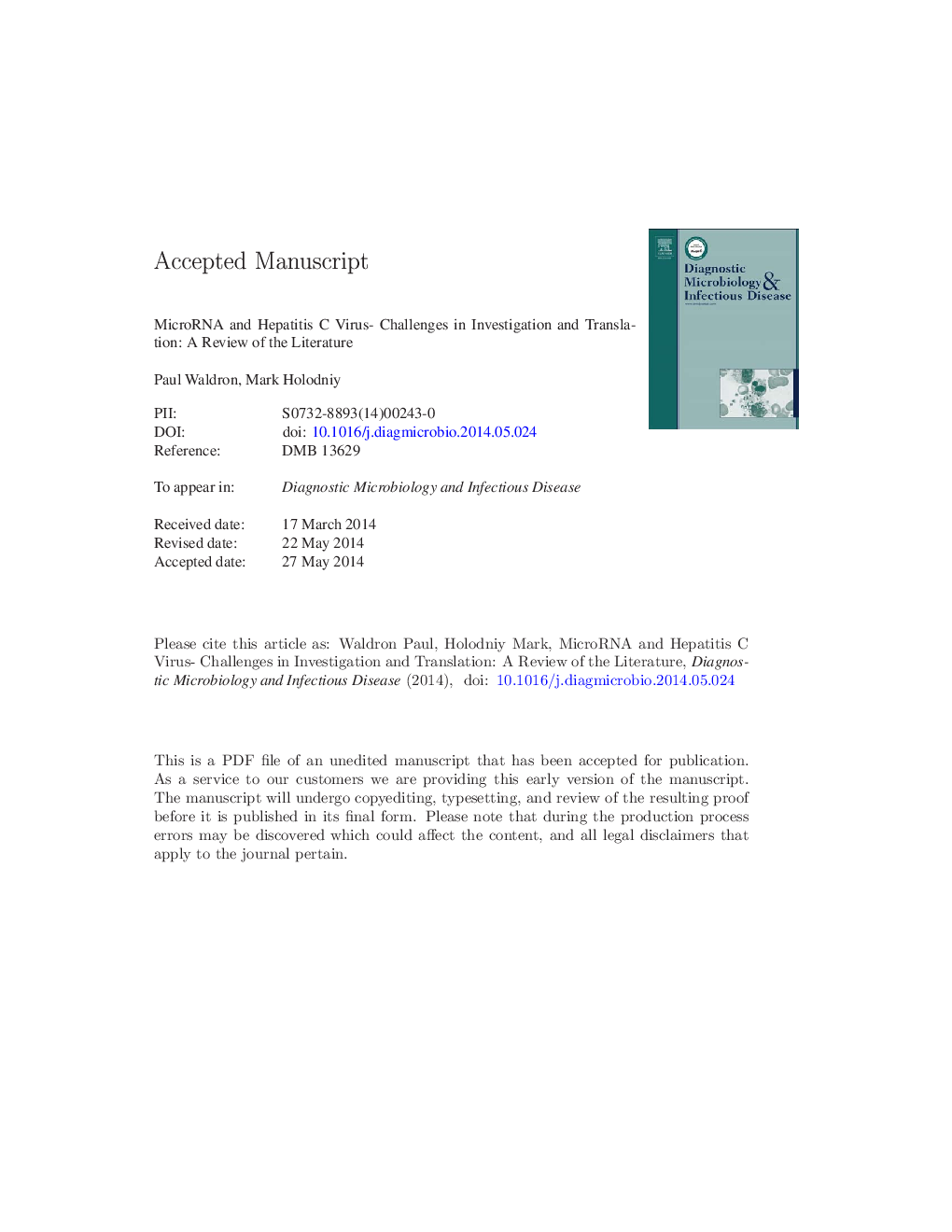| Article ID | Journal | Published Year | Pages | File Type |
|---|---|---|---|---|
| 6115787 | Diagnostic Microbiology and Infectious Disease | 2014 | 57 Pages |
Abstract
Investigations into the role of microRNA (miRNA) in hepatitis C virus (HCV) infection, disease pathogenesis and host immune and treatment response have potential to produce innovations in diagnosis, prognosis and therapy. However, investigational challenges remain in generating clinically useful and reproducible results. We review the literature with a primary emphasis on methods and technologies used to construct our current understanding of miRNA and HCV disease. A second emphasis is to understand potential clinical research applications and provide clarification of previous study results. Many miRNA have key roles in viral and immunopathogenesis of HCV infection across multiple tissue compartments. Controversy exists among published studies regarding relative measurements, temporal changes and biological significance of specific miRNA and HCV infection. To reconcile diverging data, additional research into optimal sample processing, in vitro models, techniques for microarray differential expression of miRNAs, practices for sample result normalization, and effect of HCV genotype variation on expression are all necessary. Microarray and miRNA isolation techniques should be selected based on ability to generate reproducible results in the sample type of interest. More direct comparisons of efficacy and reliability of various multiplex microarrays and an improved consensus around miRNA normalization and quantitation are necessary so that data can be compared across studies.
Related Topics
Life Sciences
Immunology and Microbiology
Applied Microbiology and Biotechnology
Authors
Paul Ravi Waldron, Mark Holodniy,
